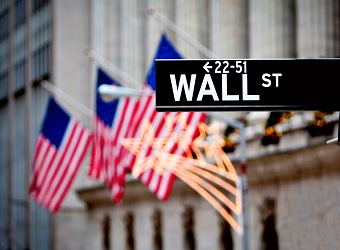U.S. stocks traded mixed Tuesday while investors continued to shrug off news coming out of Washington.
The S&P slipped 0.1 percent after hitting an all-time intraday high, with energy leading decliners. “You’re at a point where we have enough cash that wants to come into the market, but valuations are high,” said Tom Martin, senior portfolio manager at Globalt. “That’s why we can’t go much higher.”
Health care was also among the laggard, dropping 0.5 percent after Pfizer’s stock was downgraded to sell from neutral at Citi.
Bob Phillips, managing principal at Spectrum Management Group, said the fall in health care is also reflective of uncertainty surrounding government legislation on health care.
A bill aimed at repealing and replacing Obamacare after it passed the House, but Phillips said: “What the Senate is going to do [on health care] is anybody’s guess.”
The Nasdaq composite also managed a record high earlier in the session and remained around that level in afternoon ET, trading 0.18 percent higher.
The S&P and Nasdaq have managed record highs recently despite an array of mixed news coming out of Washington.
Last week, President Donald Trump fired FBI Director James Comey and, on Tuesday, he defended his sharing of reportedly highly classified information with Russian officials via Twitter.
Later on Tuesday the New York Times first reported that Israel was the ally that collected the highly classified intelligence Trump allegedly shared.
“On balance, we’ve got a market that seems impervious to what’s going on in Washington,” said Art Hogan, chief market strategist at Wunderlich Securities. “I think the market’s keying on Washington’s ability to push tax reform.”
The rise in stocks has not been a sharp one, but rather a slow and steady grind, said Ryan Detrick, senior market strategist at LPL Financial. In an email to CNBC, he pointed out that the S&P had gone 14 straight sessions without a 0.5 percent close up or down.
“That hasn’t happened in nearly 22 years, showing just how rare the past few weeks have been,” Detrick said. “Although it can feel like watching paint dry, it is important to remember that some of the strongest bull markets tend to take place in dull markets. Big swings and huge daily gains and losses aren’t the hallmark of bull markets.”
The Dow Jones industrial average traded off its session highs in afternoon ET, with Home Depot contributing the most gains and UnitedHealth the most losses.
The home-improvement retailer reported first-quarter earnings of $1.67 a share on revenue of $23.89 billion. Analysts polled by Reuters expected a profit of $1.62 per share on sales of $23.74 billion. Home Depot’s stock rose about 1.5 percent.
“HD continues to set the pace in home improvement retail. While a rising tide in the category is benefitting the company, HD continues to execute at the top of its game, driving market share gains and posting record results,” Wedbush analyst Seth Basham said in a note.
In economic news, housing starts totaled 1.172 million in April, well below the expected 1.26 million. Meanwhile, industrial production rose 1 percent, more than the expected increase of 0.4 percent.
The Dow Jones industrial average rose 2 points, or 0.01 percent to 20,984, with Microsoft leading advancers and UnitedHealth lagging.
The S&P 500 dipped 2 points, or 0.09 percent, with energy leading eight sectors lower and information technology lagging.
The Nasdaq advanced 10 points, or 0.17 percent, to 6,160.
About nine stocks declined for every five advancers at the New York Stock Exchange, with an exchange volume of 376 million and a composite volume of 1.924 billion in afternoon trade.
Source: CNBC


